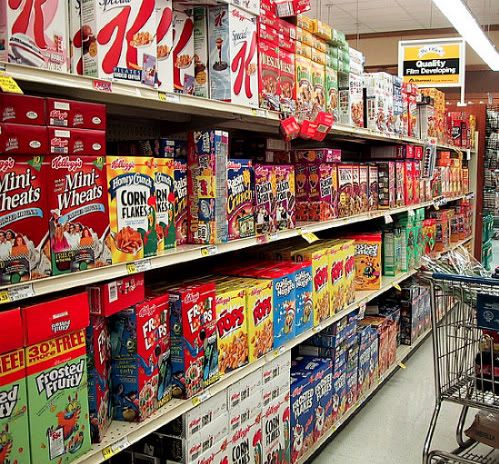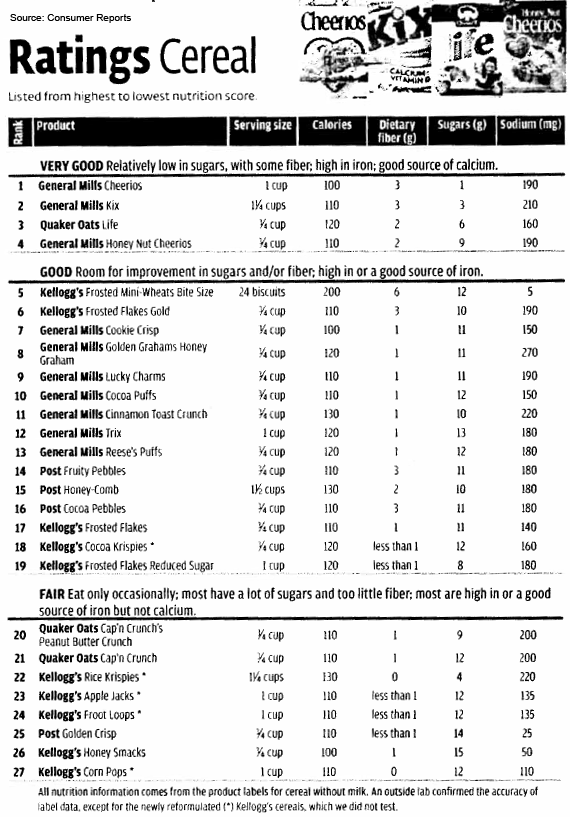
Kids care more about being healthy than some might give them credit for. A lot of kids might beg mom for sugary cereals, but it turns out that they aren’t necessarily after the sugar itself. According to a new study published in the Archives of Pediatrics & Adolescent Medicine, given a choice between cereals in plain boxes labeled “healthy” and “sugary,” most kids will pick the healthy cereal. This indicates that some of the messages kids are being sent about the importance of a balanced diet and leading a healthy life are making an impact. Unfortunately, when a colorful cartoon character is placed on a cereal box, kids tend to choose it no matter what it tastes like.
Results from the study show:
Children prefer cereals that feature popular media characters such as Shrek on the package, regardless of how they taste, researchers say.
“This tells us what we’ve probably already guessed: that young children are going to be more likely to enjoy their cereal if it has one of their favorite characters on it,” said Keri Gans, a spokeswoman for the American Dietetic Association and author of the forthcoming book, The Small Change Diet.
[. . .]
But the good news is that when there is no licensed cartoon character featured on the box, kids prefer a cereal whose name suggests healthy eating rather than sugar consumption.
That is good news, except that a lot of name brand cereals use such characters to draw kids in. None of this is particularly surprising – kids tend to be drawn to colorful, friendly cartoon characters regardless of the product. What is interesting, however, is that the pictures don’t just make children want to buy the cereal. They actually influence the kids’ perception of the way it tastes. According to the study, the positive feelings associated with the cartoons on the boxes are projected onto the cereal itself, and children who would normally prefer the taste of healthy cereal when not influenced by snazzy boxes, prefer the cereals branded with cartoon characters despite the taste.
A study out of Yale University that was released last June found that the branding of American food product packaging with characters such as Dora the Explorer drives preschoolers to choose higher-calorie, less healthful foods over more nutritious options.
“Kids transfer their favorable attitudes for that character to the product and want to buy it more,” Vaala said. “We wanted to know if that transfer extended to the actual taste of a food product, whether putting these friendly, well-known characters on products subconsciously influences their judgment of the product.”
So kids who are clearly getting the message about healthy eating are swayed toward less healthy alternatives based on child-geared aesthetics.
Surprisingly, kids who were told that the cereal was named Healthy Bits liked the taste more overall than those told they were eating cereal named Sugar Bits.
“That finding really puzzled us,” Lapierre said in an interview. “We thought it would go in the opposite direction.”Kids liked Sugar Bits as much as Healthy Bits as long as the character was on the box, but liked Sugar Bits less when no character was shown.
I can’t help but be bothered by this. I don’t want to assume a false equivalence here, but I can’t help being disturbed by the fact that this marketing strategy is so similar to the one which inspired cigarette companies to use Fred Flintstone and Joe Camel to sell their products to kids. Even if you don’t want to equate the two products, I think it’s clear that the principle behind this form of advertising is the same. And of course, this tactic is not used exclusively to sell cereal.
Just as a matter of interest:

Myself, I really do love cereal – all sorts, actually, including those which are horrible for me. But I am a grown woman, and use the judgment I have developed over the years to decide to only rarely bring sugary cereals into my home. Kids don’t make that determination. Yes, it’s the parents’ responsibility to watch what their kids eat, but I can understand how parents who are tired or less health conscious would be willing to buy their children foods they don’t need, provided enough pleading is involved. I know my mother bought me many a box of sugary garbage when I begged her at the grocery store.
When I think about some of the junk that’s in foods aimed at children these days (and for a long time now), I can’t help but be concerned. Maybe the only solutions are better education, stricter parenting, and moderation.
2 comments